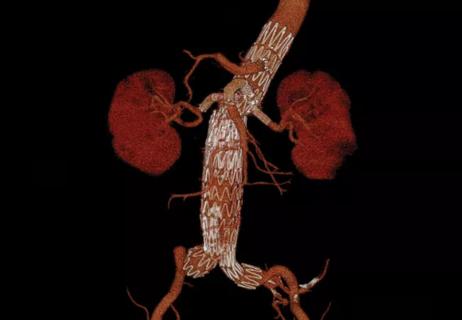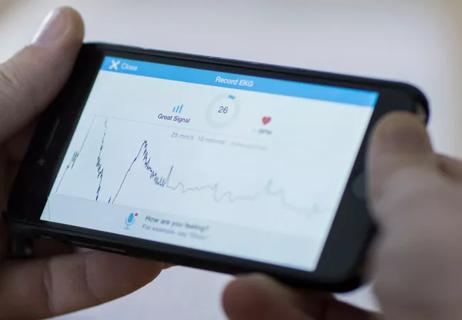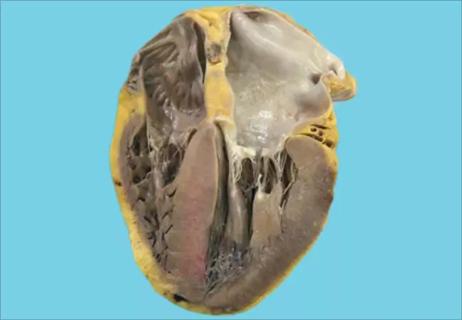VAD expert reflects on ROADMAP, MOMENTUM 3 and what lies ahead

Cleveland Clinic welcomed Jerry Estep, MD, earlier this year to serve as Section Head of Heart Failure and Transplantation in the Sydell and Arnold Miller Family Heart & Vascular Institute.
Advertisement
Cleveland Clinic is a non-profit academic medical center. Advertising on our site helps support our mission. We do not endorse non-Cleveland Clinic products or services. Policy
A Texas native, Dr. Estep received his medical degree in 1999 from Baylor College of Medicine and did his internal medicine residency at the University of Texas Southwestern Medical Center in Dallas. After completing fellowships in cardiology and heart transplantation at Houston Methodist and the Texas Heart Institute in 2007, he was invited to stay on as staff at the Methodist DeBakey Heart & Vascular Center, eventually becoming section head of heart transplant and mechanical circulatory support. During his 11 years at Houston Methodist, he built a team and program that excelled in clinical care, research and education.
He also established himself as a leading heart failure researcher, serving as national principal investigator (PI) of the landmark ROADMAP trial and playing key roles in other major studies of mechanical circulatory support devices.
Consult QD spoke to Dr. Estep a few months after he’d settled in at Cleveland Clinic. An edited transcript follows.
A: My primary focus and commitment as a clinician, researcher and educator is on the use of ventricular assist devices [VADs] to improve the length and quality of life in patients with heart failure.
Gains made with the HeartMate 3™ have propelled us forward and have brought survival rates with VADs closer to those with heart transplantation. I feel confident that one day VADs will be equivalent to or better than transplantation.
We are still in the early phase of device development, and more iterations are forthcoming. These will not be minor tweaks but rather platform changes leading to overt clinical progress. It’s an exciting time, and I feel fortunate to be part of the journey.
Advertisement
A: ROADMAP was an exciting trial, because it gave us a better understanding of when to use LVADs in patients who are not dependent on inotropes to remain stable but are still significantly ill. Although it was an observational trial — and therefore not without limitations — it provided us a way to objectively measure benefits versus risks of LVAD therapy in ambulatory patients. As it turned out, those who benefit most from LVADs in this select patient population are individuals with breathlessness at rest and a poor quality of life despite standard medical therapy.
More recently, my participation as a senior leader in the MOMENTUM 3 trial and co-chair of its flow optimization subcommittee was a tremendous opportunity to better understand hemocompatibility and the interaction between pump speed adjustments and medical management to best optimize hemodynamics to improve patient outcome. As a result, the HeartMate 3 has eliminated pump thrombosis and significantly lowered stroke risk.
A: I served as senior author of the recently published VADDA trial, a multisite randomized controlled study of a patient-centered decision aid for VAD therapy. An inadequate decision-making process for VAD implantation can create misalignments in expectations among patients, caregivers and heart failure teams. Implementation of the decision aid we created was associated with significant improvement in patients’ assessed LVAD knowledge. Ultimately, this enhanced the quality of decision-making. I am excited to help lead efforts of a recently launched multisite dissemination project to enhance use of this important aid that serves to better inform patients on the benefits and risks of VAD therapy.
Advertisement
Another exciting area is the use of remote hemodynamic monitoring to improve how heart failure patients feel and to safely keep them out of the hospital. The CardioMEMS™ device is easily implanted and has proven to reduce heart failure-related hospitalizations. I was a clinical investigator in the original CHAMPION trial and have been implanting this device for several years. Our initial experience with it at Cleveland Clinic is promising, and we’re part of the large GUIDE-HF clinical trial designed to better define the effectiveness of this system in a broader spectrum of patients with heart failure with or without prior heart failure hospitalization.
In addition, our group is participating in a study to optimize hemodynamic management of VADs using the CardioMEMS device. I’ve had the opportunity to be part of preliminary discussions on the design of a future trial that will link VAD and hemodynamic monitoring technologies. One of my goals is to play an integral role in the development of a “smart” VAD that has the capability to provide hemodynamic needs tailored to an individual patient.
A: I was quite happy at Houston Methodist and proud of what our team accomplished there. I wasn’t looking to move, but colleagues I greatly respect at Cleveland Clinic invited me to hear about opportunities here. Cleveland Clinic is very well recognized for its contributions to heart failure care, so I wanted to learn more.
After the first interview, I appreciated how closely our goals were aligned. The opportunity to engage with patients and providers across a large system with vast resources was tremendously attractive. This, coupled with excellence in clinical care and commitment to support heart failure education and research efforts, aligned with my goal to lead one of world’s largest advanced heart failure programs. And to work with outstanding medical and surgical colleagues was an opportunity I could not refuse. I am very excited about what lies ahead.
Advertisement
Advertisement

Recognition reflects prioritization of long-term patient outcomes

Recommendations help distinguish exercise-induced remodeling from pathology

New phase 2 data boost hopes for phase 3 Lp(a) HORIZON trial

Intermittent statin dosing & bempedoic acid refresh the mix of options

ERAS brings its perioperative care principles to the cardiac arena

White paper and Digital Health Summit outline key perspectives, goals

Survey finds big knowledge deficits around body shape, healthy diet

New drugs, diagnostic tools are starting to revolutionize care